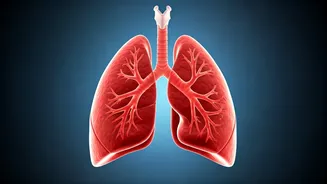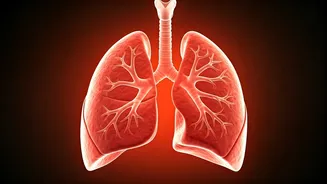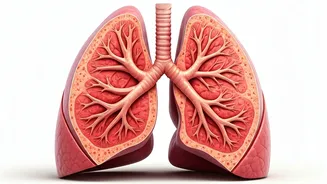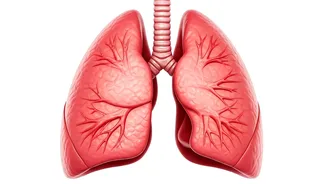Diaphragmatic Breathing First
Diaphragmatic breathing, often called belly breathing, is the foundation for good respiratory function. This method involves deep, slow breaths that engage
the diaphragm, the primary muscle for respiration. To perform this exercise, lie down or sit comfortably, place one hand on your chest and the other on your abdomen. Inhale slowly through your nose, ensuring your abdomen rises while your chest remains relatively still. Exhale slowly through your mouth, allowing your abdomen to fall. Repeat this exercise for several minutes each day. Practicing diaphragmatic breathing strengthens the diaphragm, improves oxygen intake, and reduces stress, all of which can support your lungs, especially during winter.
Pursed-Lip Breathing Regularly
Pursed-lip breathing is another effective technique to improve lung function, especially useful when you experience breathlessness. This exercise involves breathing in slowly through your nose and then exhaling slowly through pursed lips, as if you are whistling. This method creates a slight resistance to the airflow, which helps to keep your airways open longer, allowing for more efficient gas exchange. Pursed-lip breathing can help slow down your breathing rate, improve your overall respiratory health, and prevent air trapping in the lungs, which is particularly beneficial during the winter season when respiratory illnesses are more prevalent. Practice this several times daily to gain its benefits.
Simple Chest Stretching Often
Chest stretches can assist in expanding the chest cavity, which then supports deeper breathing and enhanced lung capacity. One easy chest stretch is the arm cross. Simply extend your arms out to the sides and then gently bring them across your chest, holding the position for about 15-30 seconds. Another effective stretch involves clasping your hands behind your back and pushing your chest forward while drawing your shoulder blades together. This opens up the chest and promotes better airflow, which is a great way to reduce any tension around the chest area. Repeating these stretches several times a day can significantly improve your breathing mechanics and boost overall lung health.
Walking for Respiration
Engaging in regular walking is a low-impact exercise that provides significant benefits for respiratory health. Walking increases the heart rate and breathing rate, improving oxygen uptake and carbon dioxide removal, which is crucial for lung function. Start with short walks, gradually increasing the duration and intensity as your fitness improves. Walking outdoors in fresh air, if possible, exposes your lungs to cleaner air, further supporting their function. Consistency is key; aim for at least 30 minutes of brisk walking most days of the week. This simple exercise enhances your respiratory system and your overall physical well-being.
Yoga Poses for Lungs
Yoga poses like the cobra pose (Bhujangasana), the bridge pose (Setu Bandhasana), and the seated twist (Ardha Matsyendrasana) can considerably enhance lung function. These poses encourage deeper breathing and stretch the chest and back muscles, improving overall respiratory capacity. The cobra pose opens the chest and strengthens the back muscles, promoting better breathing. The bridge pose enhances chest expansion and strengthens the respiratory muscles. The seated twist helps to detoxify the lungs and improve their efficiency. Practicing these yoga poses regularly not only enhances lung health but also improves posture and reduces stress, contributing to overall wellness, particularly during the winter.






